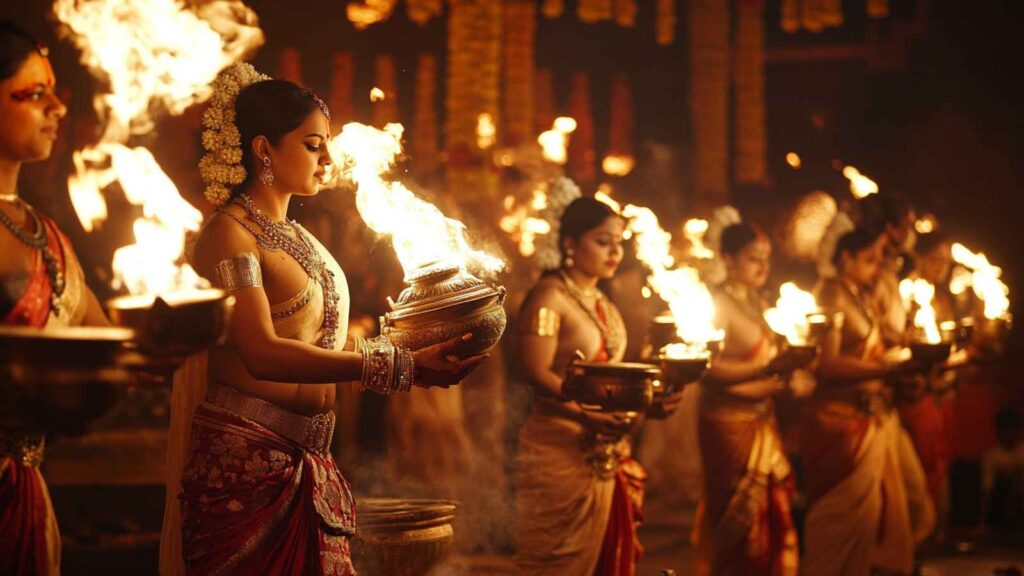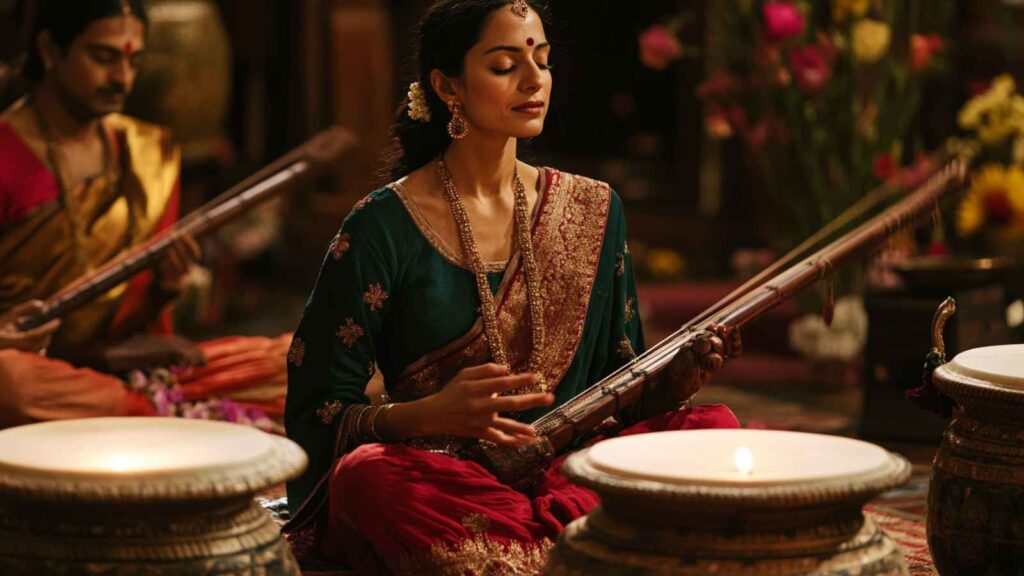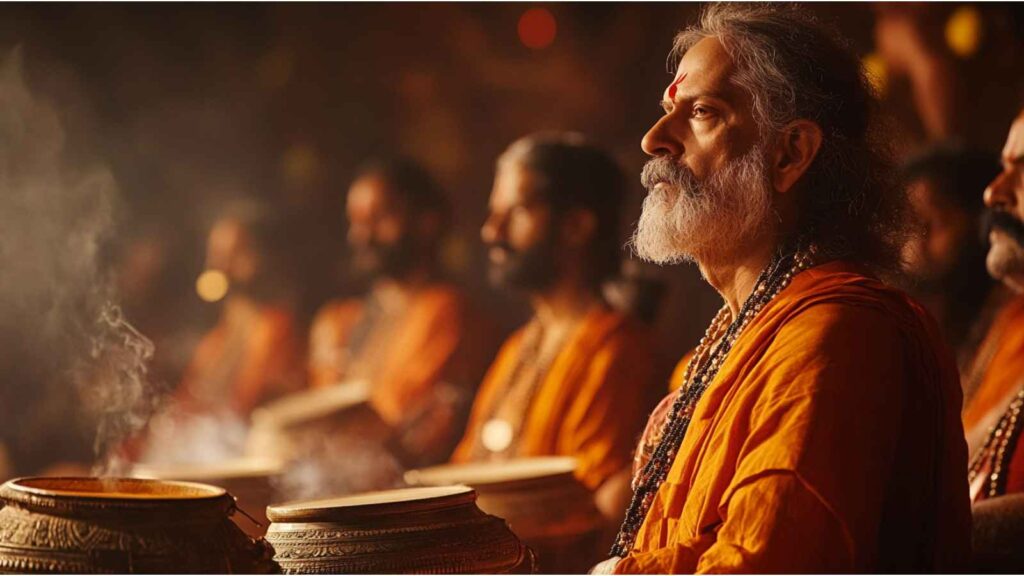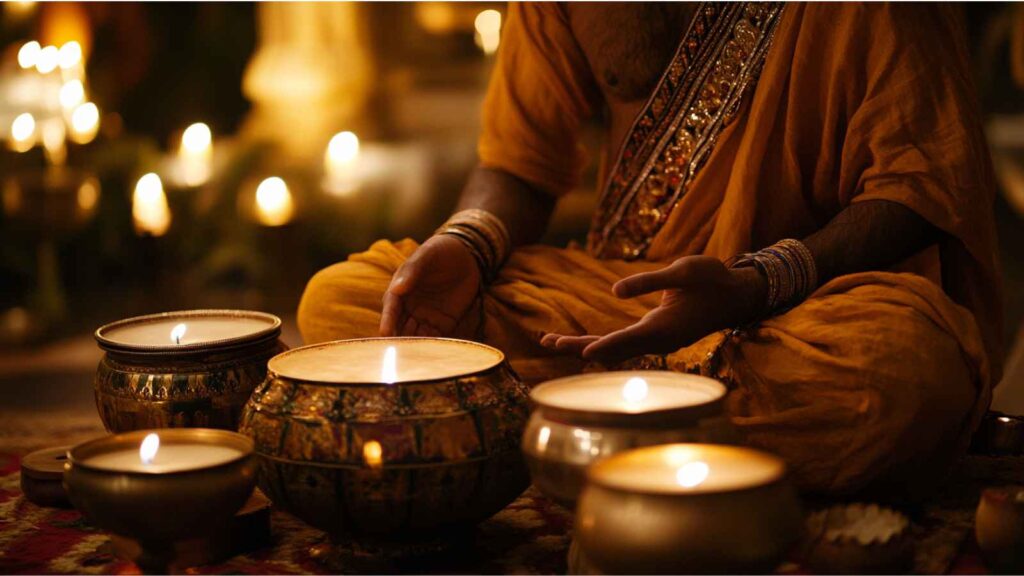Samaveda: The Musical Essence of Hindu Ritualistic Tradition
The Samaveda holds a unique and significant place within the vast tapestry of Hinduism’s sacred texts. Known as the “Veda of Melodies,” the Samaveda is more than just a scripture; it is an essential guide to the musical and ritualistic aspects of Hindu worship. While the other Vedas—Rigveda, Yajurveda, and Atharvaveda—primarily focus on hymns, rituals, and philosophical teachings, the Samaveda is entirely centered on music and sound. Its purpose is to accompany the rituals of sacrifice and worship, adding a divine and melodious dimension to the practice of Vedic rituals.
Read More About sacred texts
This article explores the importance of the Samaveda in Hinduism, focusing on its role in the ritualistic tradition, its key contributions to music, and its lasting impact on contemporary Hindu practices. By understanding the Samaveda, we gain deeper insights into the spiritual and philosophical significance of music in the Vedic tradition.
What is the Samaveda?

The Samaveda is one of the four canonical texts of the Vedic literature and is often referred to as the “Veda of Chants” or “Veda of Melodies.” It is primarily composed of hymns taken from the Rigveda, but with one major distinction: the hymns in the Samaveda are set to music and are meant to be sung in specific tones and rhythms. The Samaveda was, and still is, a key element in the Vedic sacrificial rituals, where chanting and recitation play a central role in invoking the gods and bringing about cosmic harmony.
Unlike the Rigveda, which is mostly a collection of hymns recited by priests, the Samaveda emphasizes the musical rendering of those hymns. The mantras of the Samaveda are specifically designed to be sung by priests during sacrificial ceremonies (yajnas). These musical compositions are believed to have a special power to connect with the divine, invoking blessings, protection, and spiritual enlightenment.
The Structure of the Samaveda

The Samaveda is divided into two major sections: the Arcika and the Brahmana.
1. Arcika (Chants and Hymns)
The Arcika section consists of the hymns or chants, many of which are taken from the Rigveda. These hymns are classified into two categories:
- Stotra: Hymns that praise the gods and invoke their blessings.
- Brahmana: These are ritualistic texts that provide the specific instructions for performing the musical aspects of Vedic sacrifices.
The hymns of the Arcika section are arranged to be sung during Vedic rituals, and the musical notes (svara) and tones (melodic scales) are vital to the performance. Each hymn is carefully composed to ensure that the words and their musical rendition align with the ritualistic intentions.
2. Brahmana (Ritual Instructions)
The Brahmana section offers detailed instructions on how to perform the sacrifices and rituals. It focuses on the correct musical chanting and the methods of using sound to invoke the divine. The Brahmana is key to ensuring that the hymns are sung in the right manner, maintaining the sacred integrity of the rituals. The correct pronunciation and musical rendering are believed to have a profound impact on the success of the rituals.
Key Contributions of the Samaveda to Hindu Rituals

The Samaveda has a lasting impact on Hindu rituals, especially those involving the use of sacred chants and mantras. Its influence can still be seen in contemporary Hindu worship, where chanting and the musical recitation of mantras play a crucial role.
1. Chanting and Sacred Sound (Nada Brahman)
One of the core teachings of the Samaveda is the concept of Nada Brahman, which refers to the idea that sound is a manifestation of the divine. According to this philosophy, sound is not just a physical phenomenon; it is sacred and has the ability to connect human consciousness with the universal consciousness, or Brahman. The musical nature of the Samaveda emphasizes this belief, as its hymns are seen as divine sounds that can elevate the soul and purify the mind.
In modern Hinduism, the use of sound in worship—whether through chanting the Gayatri Mantra, singing bhajans, or participating in kirtans—is a direct continuation of the principles found in the Samaveda. The belief that sound has transformative power is central to the spiritual practice of millions of Hindus around the world.
2. Vedic Rituals and Sacrificial Offerings (Yajnas)
The Samaveda plays a crucial role in the performance of Yajnas (sacrificial offerings), which were central to Vedic religious practice. The hymns of the Samaveda were sung by the Udgatr (chanting priests) during these sacrifices to invoke the blessings of the gods. Today, although the exact ritualistic practices of the Vedic yajnas are not as widespread, the chanting of Vedic mantras during important ceremonies—such as weddings, festivals, and temple worship—still draws from the musical tradition established by the Samaveda.
3. Musical Instruments in Rituals
The Samaveda also had a significant impact on the use of musical instruments in Vedic rituals. Instruments such as the Veena, Mridangam, and flutes were used to accompany the chants and hymns, creating a harmonious atmosphere that was believed to please the gods. The musical elements of these rituals set the Samaveda apart from other Vedic texts, highlighting the connection between sound, rhythm, and spirituality.
In contemporary Hinduism, the tradition of using musical instruments in religious ceremonies continues, with instruments like the tabla, harmonium, and dholak being common in temple worship and devotional music.
The Role of Samaveda in Modern Hindu Worship

Although the Samaveda originated in ancient India, its influence continues to permeate Hindu worship today. The role of sound and music in modern Hinduism is a direct descendant of the Samaveda’s principles, with sound playing a central role in the spiritual life of Hindus worldwide.
1. Chanting and Mantras
The musical nature of the Samaveda continues to be seen in the modern practice of chanting Vedic mantras. The Gayatri Mantra, for example, is a key prayer in Hinduism, and its chanting is considered an act of spiritual purification. Many temples still conduct rituals where hymns and mantras are sung by priests to create a sacred and spiritual environment.
2. Bhajans and Kirtans
Bhajans (devotional songs) and kirtans (group chanting) are popular forms of worship in Hinduism today. These forms of worship use melody and rhythm to invoke the divine and create a sense of unity among the devotees. These practices can be seen as an extension of the musical traditions introduced by the Samaveda, as they emphasize the power of sound and music in reaching the divine.
Architectural Highlights and Visitor Experience in Samaveda-related Temples
Many temples dedicated to Vedic deities still adhere to the traditional forms of worship described in the Samaveda, with the chanting of Vedic mantras being a focal point. Temples like the Somnath Temple in Gujarat, the Kashi Vishwanath Temple in Varanasi, and others continue the ancient tradition of Vedic recitation and musical offerings during their rituals.
1. Somnath Temple – Prabhas Patan, Saurashtra, Gujarat
- Historical Background: The Somnath Temple is one of the most famous temples in India and is dedicated to Lord Shiva. It is historically significant as it has been rebuilt multiple times, with the original structure dating back to ancient times. The temple is believed to be the first of the twelve Jyotirlingas of Lord Shiva.
- Architectural Highlights: The temple has a majestic structure with intricate carvings, reflecting both ancient and medieval architectural styles. The temple’s Shikhara (spire) towers over the surrounding landscape, and the intricate sculptures inside depict scenes from Hindu mythology.
- Visitor Experience: The Somnath Temple offers a serene and spiritually uplifting experience. Visitors can participate in Aarti (worship with music), where the chanting of Vedic hymns, including those derived from the Samaveda, fills the air, invoking a sense of divine presence.
Conclusion
The Samaveda remains an indispensable part of Hinduism’s spiritual, musical, and ritualistic traditions. Its hymns and musical compositions continue to influence how Hindus worship, particularly through the chanting of mantras, devotional songs, and sacred rituals. The Samaveda’s teachings about the divine nature of sound, the power of music in invoking the gods, and the role of ritual in spiritual practice have left an indelible mark on Hindu worship, ensuring its place in the faith for generations to come.


